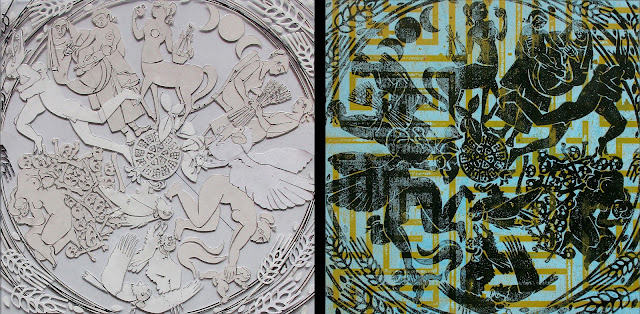Banyani, The Green Man

This is my Green Man collograph, Bayani. Visit him during the Vashon Island Art Studio Tour, the first two weekends in May 6-7 & 13-14, 2017. Banyani was inspired by a Philippine creation, vegetation/resurrection myth. This story is interesting because it involves a combination of three gods to bring mankind into this world. One, Bathala, (caretaker of the earth), battles, kills and burns the second, his challenger, Ululant Kaluluwa, (sky serpent, orphaned spirit), befriends and loves the third, Galang Kaluluwa, (winged, wandering spirit). Upon the peaceful death of and request by Galang Kaluluwa, Bathala buried Galang’s body where the serpent god Ululant Kaluluwa had once been killed and burned. From their common grave grew a tall tree with a large round nut, the coconut palm. Its’ leaves looked like the wings of Galang Kaluluwa, but the trunk was sinuous like the the serpent Ulilang Kaluluwa. When Bathala husked the nut he found what looked like two eyes, a nose,





